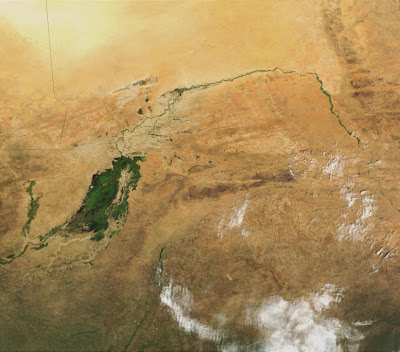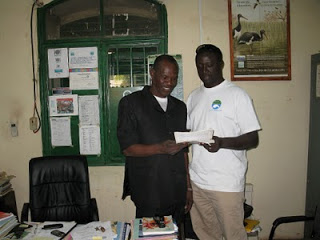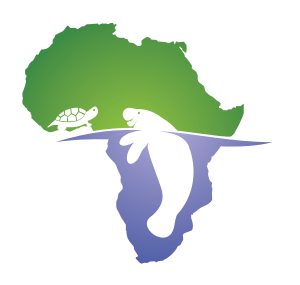Mali wrap-up (for now)
 Mali is a very important place to study the West African manatee because this population is isolated thousands of miles inland from their coastal relatives. As the photo above shows (courtesy of Google Earth), the inland Niger delta is a huge wetland that nourishes an otherwise extremely arid desert region. Manatees here were naturally isolated once they colonized this area however many years ago (possibly literally millions of years ago!), since the species does not migrate thousands of miles. As they slowly moved into this area over time, they stayed. But now the construction of dams in this region has permenently separated them from other populations downriver. As in other African countries with large dams (Ghana, Senegal, Nigeria) this makes protecting the species that much more urgent. There are also manatees in western Mali in the Senegal River (and possibly the 2 tributaries that form it, the Bafing and the Baoule) but these too are locked into the Senegal River by the Menantali dam in Mali, and the Diama dam at the mouth of the Senegal River.
Mali is a very important place to study the West African manatee because this population is isolated thousands of miles inland from their coastal relatives. As the photo above shows (courtesy of Google Earth), the inland Niger delta is a huge wetland that nourishes an otherwise extremely arid desert region. Manatees here were naturally isolated once they colonized this area however many years ago (possibly literally millions of years ago!), since the species does not migrate thousands of miles. As they slowly moved into this area over time, they stayed. But now the construction of dams in this region has permenently separated them from other populations downriver. As in other African countries with large dams (Ghana, Senegal, Nigeria) this makes protecting the species that much more urgent. There are also manatees in western Mali in the Senegal River (and possibly the 2 tributaries that form it, the Bafing and the Baoule) but these too are locked into the Senegal River by the Menantali dam in Mali, and the Diama dam at the mouth of the Senegal River.
So I’m very happy that there are people in multiple agencies in Mali who want to work to study and conserve manatees. At the workshop we had representatives from the Ministry of Water and Forestry, the Niger River Basin Authority, and the Niger River Department of Fisheries, and regional people came from many locations along the river: Kangaba at the border with Guinea; San in the southern portion; Sofara, Mopti, and Djenne in the inland delta. Malian interest in manatees is not new, as shown by this old poster I saw in several offices around the country (although the artist clearly used a photo of a Florida manatee, rather than a more slender African manatee, as his inspiration!) But so far there have been only brief surveys here. Now I hope these folks can initiate longer term monitoring and research to really understand the size and needs of the population, the effects of dams, and illegal poaching (particularly where it’s most prevalent at the north end of the delta). And as we discussed, hopefully they’ll provide training for additional people, including colleagues in the northern part of the river at Timbuktu and Gao.
But so far there have been only brief surveys here. Now I hope these folks can initiate longer term monitoring and research to really understand the size and needs of the population, the effects of dams, and illegal poaching (particularly where it’s most prevalent at the north end of the delta). And as we discussed, hopefully they’ll provide training for additional people, including colleagues in the northern part of the river at Timbuktu and Gao.
I appreciated the opportunity to work one on one with Berthe in San and Abdoulaye in Mopti (below), and look forward to hearing their future progress, which I’ll report on this blog. It takes alot of self-motivation to keep going when you have limited resources, other work, etc. so I’ll keep trying to support their efforts via the regional network.
 I’m also extremely grateful to have a new partner in the Ministry of Water and Forestry! We are now working together to export the 9 tissue and bone samples I collected on this trip in order to start the first genetics analysis for the species from Mali. Below, Timbo and Tomas look over export regulations. These are more stingent than CITES because the species is fully protected in Mali. Since I left, Berthe has already collected another sample. So we’re off and running!
I’m also extremely grateful to have a new partner in the Ministry of Water and Forestry! We are now working together to export the 9 tissue and bone samples I collected on this trip in order to start the first genetics analysis for the species from Mali. Below, Timbo and Tomas look over export regulations. These are more stingent than CITES because the species is fully protected in Mali. Since I left, Berthe has already collected another sample. So we’re off and running!


